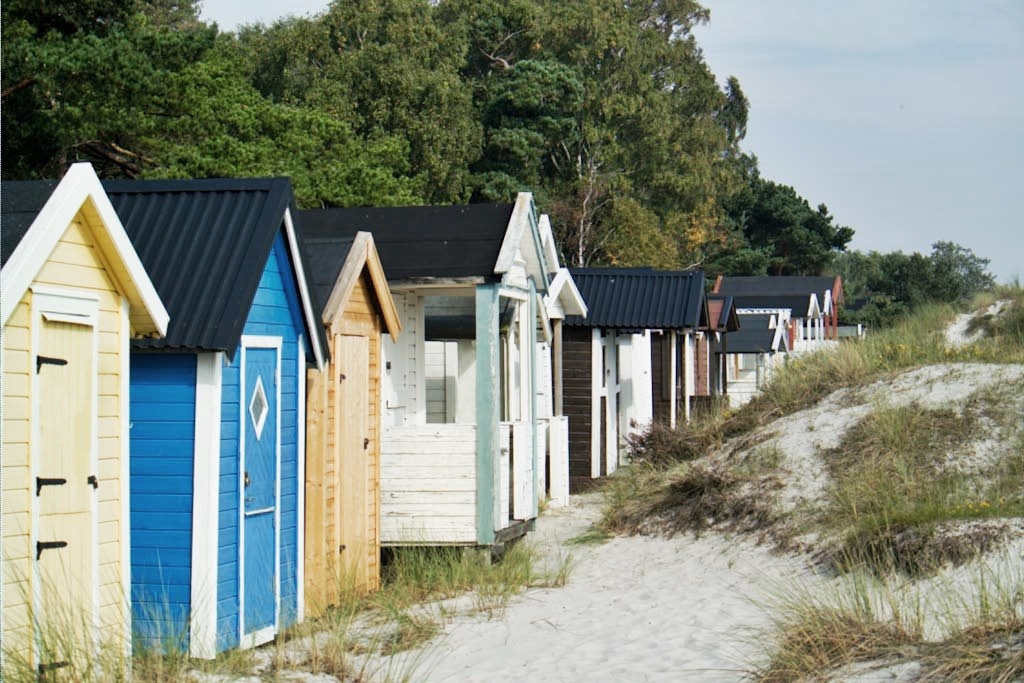|
Inage-ku, Chiba
is one of the six wards of the city of Chiba in Chiba Prefecture, Japan. As of April 2012, the ward had an estimated population of 156,860 and a population density of 7,380 persons per km2. The total area was . Geography Inage Ward is located in an inland area of northwest Chiba City. The ward is a flat, highly urbanized area of mixed industry and housing. Surrounding municipalities * Wakaba Ward * Chuo-ku Ward * Mihama Ward * Hanamigawa Ward * Yotsukaidō, Chiba History The area of present-day Inage Ward was settled since ancient times. The Inage Sengen Shrine dates to the 9th century. In modern times. Inage was composed of the villages of Tsuga, Kemigawa, Kotegawa and a portion of the town of Chiba in 1889. Kemigawa became a town in 1891. Chiba became a city in 1921. Chiba annexed Tsuga Village and Kemigawa Town in 1937, and Kotegawa in 1954. Inage historically faced Tokyo Bay, and given its proximity to Tokyo, was a popular tourist destination for swimming and clamming ... [...More Info...] [...Related Items...] OR: [Wikipedia] [Google] [Baidu] |
Wards Of Japan
A is a subdivision of the cities of Japan that are large enough to have been City designated by government ordinance, designated by government ordinance. Chapter 17: Government System (Retrieved on July 4, 2009) Wards are used to subdivide each City designated by government ordinance (Japan), city designated by government ordinance ("designated city"). The Special wards of Tokyo, 23 special wards of Tokyo Metropolis have a municipality, municipal status, and are not the same as other entities referred to as ''ku'', although their Tokyo City, predecessors were. Wards are local government, local entities directly controlled by the municipal government. They handle administrative functions such as ''koseki'' registration ... [...More Info...] [...Related Items...] OR: [Wikipedia] [Google] [Baidu] |
Keisei Chiba Line
The is a railway line in Chiba Prefecture, Japan, operated by the private railway operator Keisei Electric Railway. It branches from the Keisei Main Line at Keisei Tsudanuma Station is a junction passenger railway station in the city of Narashino, Chiba Prefecture, Japan, operated by the private railway operator Keisei Electric Railway. Lines Keisei Tsudanuma Station is served by the following lines. * Keisei Main Line * ... and connects to Chiba Chūō Station. At Chiba Chūō Station, the line is connected to the Chihara Line. History The entire line opened on 17 July 1921 as an electrified, dual-track, gauge branch line. On 10 October 1959, the line was regauged to in conjunction with the regauging of the Main Line. Stations * All trains are local trains that stop at all stations. Operation Pattern In the daytime, trains from Keisei Tsudanuma to Chiharadai station and Shin-Keisei through services from Matsudo to Chiba-Chuo run at 20-minute intervals. On the ... [...More Info...] [...Related Items...] OR: [Wikipedia] [Google] [Baidu] |
East Japan Railway Company
The is a major passenger railway company in Japan and the largest of the seven Japan Railways Group companies. The company name is officially abbreviated as JR-EAST or JR East in English, and as in Japanese. The company's headquarters are in Yoyogi, Shibuya, Tokyo, next to Shinjuku Station. It is listed in the Tokyo Stock Exchange (it formerly had secondary listings in the Nagoya and Osaka stock exchanges), is a constituent of the TOPIX Large70 index, and is one of three Japan Railways Group constituents of the Nikkei 225 index, the others being JR Central and JR West. History JR East was incorporated on 1 April 1987 after being spun off from the government-run Japanese National Railways (JNR). The spin-off was nominally "privatization", as the company was actually a wholly owned subsidiary of the government-owned JNR Settlement Corporation for several years, and was not completely sold to the public until 2002. Following the breakup, JR East ran the operations on forme ... [...More Info...] [...Related Items...] OR: [Wikipedia] [Google] [Baidu] |
World War II
World War II or the Second World War (1 September 1939 – 2 September 1945) was a World war, global conflict between two coalitions: the Allies of World War II, Allies and the Axis powers. World War II by country, Nearly all of the world's countries participated, with many nations mobilising all resources in pursuit of total war. Tanks in World War II, Tanks and Air warfare of World War II, aircraft played major roles, enabling the strategic bombing of cities and delivery of the Atomic bombings of Hiroshima and Nagasaki, first and only nuclear weapons ever used in war. World War II is the List of wars by death toll, deadliest conflict in history, causing World War II casualties, the death of 70 to 85 million people, more than half of whom were civilians. Millions died in genocides, including the Holocaust, and by massacres, starvation, and disease. After the Allied victory, Allied-occupied Germany, Germany, Allied-occupied Austria, Austria, Occupation of Japan, Japan, a ... [...More Info...] [...Related Items...] OR: [Wikipedia] [Google] [Baidu] |
Land Reclamation
Land reclamation, often known as reclamation, and also known as land fill (not to be confused with a waste landfill), is the process of creating new Terrestrial ecoregion, land from oceans, list of seas, seas, Stream bed, riverbeds or lake beds. The land reclaimed is known as reclamation ground, reclaimed land, or land fill. History In ancient Egypt, the rulers of the Twelfth Dynasty of Egypt, Twelfth Dynasty (c. 2000–1800 BC) undertook a far-sighted land reclamation scheme to increase agricultural output. They constructed levees and canals to connect the Faiyum Oasis, Faiyum with the Bahr Yussef waterway, diverting water that would have flowed into Lake Moeris and causing gradual evaporation around the lake's edges, creating new farmland from the reclaimed land. A similar land reclamation system using dams and drainage canals was used in the Greek Lake Copais, Copaic Basin during the Middle Helladic period, Middle Helladic Period (c. 1900–1600 BC). Another early large-s ... [...More Info...] [...Related Items...] OR: [Wikipedia] [Google] [Baidu] |
Beach Hut
A beach hut (also known as a beach cabin, beach box or bathing box) is a small, usually wooden and often brightly coloured, box above the high tide mark on popular bathing beaches. They are generally used as a shelter from the sun or wind, changing into and out of swimming attire and for the safe storing of some personal belongings. Some beach huts incorporate simple facilities for preparing food and hot drinks by either bottled gas or occasionally mains electricity. Locations At many seaside resorts, beach huts are arranged in one or more ranks along the top of the beach. Depending upon the location, beach huts may be owned privately or may be owned by the local council or similar administrative body. On popular beaches, privately owned beach huts can command substantial prices due to their convenient location, out of all proportion to their size and amenity. A pre-war wooden beach chalet at West Bexington, Dorset sold at auction for £216,000 in 2006, and a beach hut on ... [...More Info...] [...Related Items...] OR: [Wikipedia] [Google] [Baidu] |
Clamming
Clam digging is a North American term for a common way to harvest clams (edible infaunal bivalve mollusks) from below the surface of the tidal sand flats or mud flats where they live. It is done both recreationally (for enjoyment or as a source of food) and commercially (as a source of income). Commercial digging in the U.S. and Canada is colloquially referred to as ''clamming'', and is done by a ''clammer''. Amateur clam digging is often done using a straight long-handled spading fork, or a spading shovel. Commercial clamming for quahog clams, and the larger surf clams (soup clams) is primarily done offshore, via mechanical dredging. To harvest cultivated clam beds, aquaculturists often use a much smaller version (hand pulled) from the offshore dredge. Another form of commercial clamming is done from a flat-decked boat using a clam rake with a telescopic handle. The head of these rakes have long tines attached to a "basket-like" cage in which the clams are col ... [...More Info...] [...Related Items...] OR: [Wikipedia] [Google] [Baidu] |
Tokyo Bay
is a bay located in the southern Kantō region of Japan spanning the coasts of Tokyo, Kanagawa Prefecture, and Chiba Prefecture, on the southern coast of the island of Honshu. Tokyo Bay is connected to the Pacific Ocean by the Uraga Channel. The Tokyo Bay region is the most populous and the largest industrialized area in Japan. Names In ancient times, the Japanese knew Tokyo Bay as the . By the Azuchi–Momoyama period (1568–1600) the area had become known as after the city of Edo. The bay took its present name in modern times, after the Imperial court moved to Edo and renamed the city Tokyo in 1868. Geography Tokyo Bay juts prominently into the Kantō Plain. It is surrounded by the Bōsō Peninsula in Chiba Prefecture to the east and the Miura Peninsula in Kanagawa Prefecture to the west. The shore of Tokyo Bay consists of a Diluvium, diluvial plateau and is subject to rapid marine erosion. Sediments on the shore of the bay make for a smooth, continuous shoreline. Bound ... [...More Info...] [...Related Items...] OR: [Wikipedia] [Google] [Baidu] |
Inage Sengen Shrine
is one of the six wards of the city of Chiba in Chiba Prefecture, Japan. As of April 2012, the ward had an estimated population of 156,860 and a population density of 7,380 persons per km2. The total area was . Geography Inage Ward is located in an inland area of northwest Chiba City. The ward is a flat, highly urbanized area of mixed industry and housing. Surrounding municipalities * Wakaba Ward * Chuo-ku Ward * Mihama Ward * Hanamigawa Ward * Yotsukaidō, Chiba History The area of present-day Inage Ward was settled since ancient times. The Inage Sengen Shrine dates to the 9th century. In modern times. Inage was composed of the villages of Tsuga, Kemigawa, Kotegawa and a portion of the town of Chiba in 1889. Kemigawa became a town in 1891. Chiba became a city in 1921. Chiba annexed Tsuga Village and Kemigawa Town in 1937, and Kotegawa in 1954. Inage historically faced Tokyo Bay, and given its proximity to Tokyo, was a popular tourist destination for swimming and clamming. Nu ... [...More Info...] [...Related Items...] OR: [Wikipedia] [Google] [Baidu] |
Ancient Times
Ancient history is a time period from the History of writing, beginning of writing and recorded human history through late antiquity. The span of recorded history is roughly 5,000 years, beginning with the development of Sumerian language, Sumerian cuneiform script. Ancient history covers all continents inhabited by humans in the period 3000 BCAD 500, ending with the Early Muslim conquests, expansion of Islam in late antiquity. The three-age system periodises ancient history into the Stone Age, the Bronze Age, and the Iron Age, with recorded history generally considered to begin with the Bronze Age. The start and end of the three ages vary between world regions. In many regions the Bronze Age is generally considered to begin a few centuries prior to 3000 BC, while the end of the Iron Age varies from the early first millennium BC in some regions to the late first millennium AD in others. During the time period of ancient history, the world population was Exponential growth, e ... [...More Info...] [...Related Items...] OR: [Wikipedia] [Google] [Baidu] |





